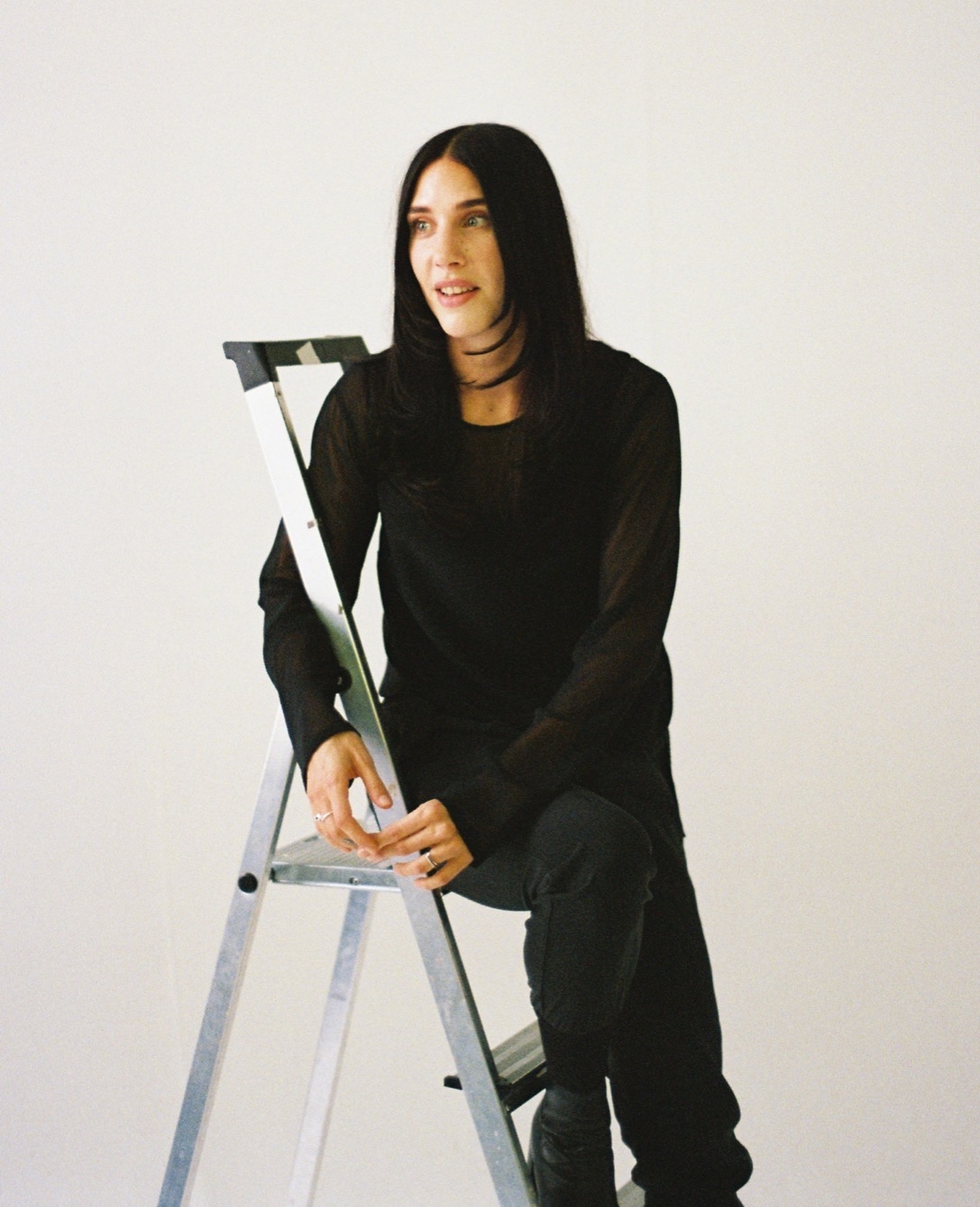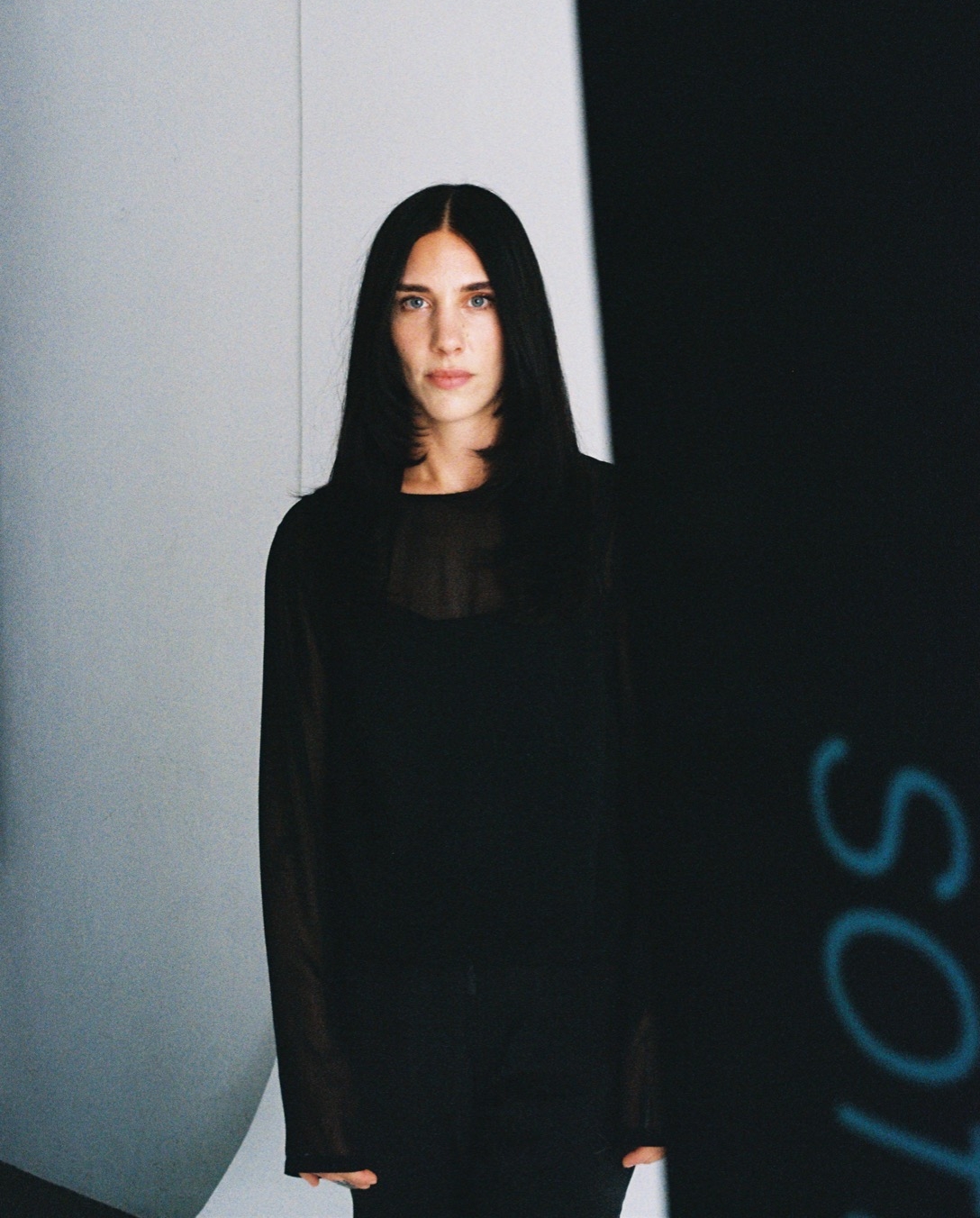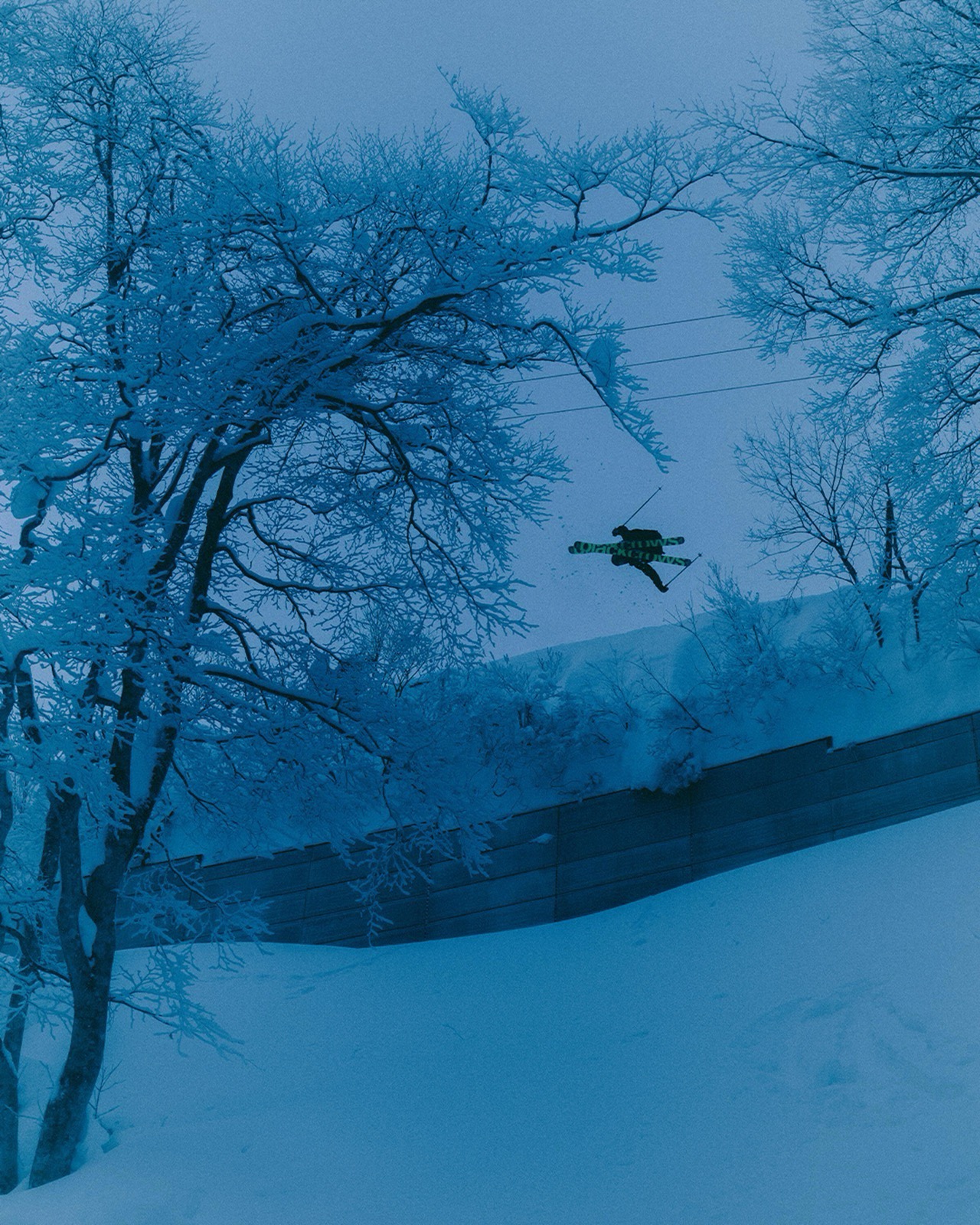Philippa Pacho, the Stockholm-born DJ, producer, and label owner, has turned her multicultural identity into a creative force that fuses introspection with sonic intensity. From the illegal parties of Sweden’s underground to the booths of Berghain and Bassiani, she has built an authentic path driven by curiosity, depth, and devotion to music. Through her labels Positivesource and Phorum Records, Pacho continues to explore new sounds while promoting a conscious, inclusive vision of club culture. As she returns to the decks this Friday with the Closer crew in Milan for their birthday celebration, Philippa reflects on her journey, music as resistance, and the power of empathy in divided times.
You were born and raised in Sweden in an immigrant family. Currently, Europe’s immigration policies and measures seem ambivalent: on one hand, borders are being strengthened to protect the host nation, while on the other, asylum procedures are facilitated to support the integration of asylum seekers. What was it like for you and your parents back then? And what are your thoughts on the current climate?
I was born in Stockholm to parents who immigrated to Sweden in the 1980s. They left their home countries, both under communist regimes, in search of better lives, as so many have done and continue to do for their own reasons. I can’t speak for my parents, as their stories are uniquely theirs to tell. Still, I can say that integrating into a new society was certainly challenging for them, as it is for many immigrants.
Today, considering the rise of right-wing rhetoric across Sweden and much of Europe, it feels as though the lessons of the past are being tested. The most troubling issue now is how fear-driven narratives are used to divide people, creating an “us” and a “them.” Politicians and vocal social media figures often amplify these tensions to serve their own agendas, framing complex social issues in overly simplistic and polarising ways. It’s disheartening to watch this unfold, but I try to hold onto hope amid these uncertain times, believing that empathy, dialogue, and understanding are stronger forces than division
Regarding your family, in a past interview you mentioned your father and his extensive jazz vinyl collection. Was he the one who passed on the love for music to you? And what kind of music did you listen to and/or collect both during your childhood and adolescence?
I credit my father for my love of music. As a child, it was incredibly special to have a parent whose passion for sound brought so much joy into our home. Some of my fondest memories are of going with him to record stores, spending hours digging through crates, it taught me the value of patience and curiosity. Even now, I get that same thrill when I’ve gathered a batch of new tracks that took time and effort to discover. For me, it’s always been about the process rather than the destination, the joy of the search itself. As a kid, I mainly listened to pop, soul, and hip-hop, and as I got older, I became fascinated by Swedish underground hip-hop and R&B. I still remember when Myspace was this incredible portal for finding underground music and connecting with others who shared that same excitement for discovery.
Before entering the clubbing world, you were deeply involved in a lively network of illegal parties. In these contexts, discretion played a key role in the success of the events themselves, and the attendees were “few but good.” Even though this is an underground phenomenon, do you think it is still fair to call it inclusive, even if some people were inevitably left out?
The parties I enjoyed most tended to be quite discreet. We wanted to maintain a certain energy, a space where everyone was truly there to participate and appreciate the music, not just observe. Having some selectivity at the door helped ensure that the crowd understood the sound, respected the vibe, and shared our values, things like inclusivity and mutual respect. If someone isn’t welcomed into these spaces, perhaps it’s simply because the environment isn’t aligned with who they are, and that’s okay.
Not many people know that, even before becoming who you are today, you were part of the duo Sthlm Murder Girls with Johanna Schneider. Your style ranges from techno to house, with deep grooves and infectious rhythms, combined with continuous experimentation and exploration. How did this project come about? As the name suggests, was there also an intention to bring a fresh breath into the Swedish scene, and more broadly, the European scene?
Back then, we used to dig for the same hypnotic/deep techno and after playing a back-to-back set one night, we decided to keep it going. It became a great way to broaden our collections and push each other musically; having someone who dug through the same sounds made the process even more inspiring. Touring together and sharing those experiences had a real energy to it, it was exciting, spontaneous, and a lot of fun.
In 2012, your artist residency at Under Bron in Stockholm began, a key venue in the Swedish music scene. There, you met internationally renowned DJs, honed your technical skills, and energized the dancefloor. However, in 2014 you moved to Berlin. What motivated you to leave your homeland? Looking back now, do you still believe it was the best choice for your career?
Before I moved to Berlin, I used to travel there often, so by the time I relocated, I already had a network of friends. Although I was deeply rooted in Stockholm, I felt the need to experience something new. Back then, rent in Berlin was incredibly affordable, which meant I could live comfortably on much less than in Stockholm. I never planned to stay for long, but here I am, more than ten years later, and I can’t imagine living anywhere else. Berlin really is the perfect city for a DJ: the community is open, networking comes naturally, and you have access to some of the best venues in the world, even if, sadly, many have now disappeared.


During the difficult and dark years of the pandemic, you and Luke Standing better known as Blue Hour, founded the label positivesource. A beacon of hope during the absence of nightlife and a tribute to the golden years of clubbing. How much space does this freedom and openness to different sounds leave for risk, and how important is awareness in guiding your creative choices?
We started the label about five years ago, during the pandemic, when nightlife came to a sudden halt and everyone was in isolation. We needed something creative to focus on, and it became a great way to stay connected with other artists who were also stuck at home. At the time, Luke and I wanted to experiment with new sounds and put together a small compilation. The project is still alive today, even though our main focus has shifted toward our other labels, Phorum and Blue Hour Music.
The various releases on the label share a common symbol, always adopted by rave culture: the smiley. If in 2021 your goal was to uplift people’s spirits after the pandemic, does your mission now also include offering relief in a period marked by numerous global conflicts?
Music has always been a powerful form of escapism, a way to disconnect from the chaos of the world, even if just for a moment. It can be deeply therapeutic, both for those who create it and those who listen. I’d like to think that the music we release continues to offer that kind of relief and reflection, especially in times like these.

Beyond the infamous Berghain, where you now regularly perform as a resident, another of your “homes” is Bassiani in Georgia, where you debuted in 2023. A year later, the 14-hour journey you and your colleague Kancheli undertook to celebrate the club’s tenth anniversary became legendary. What makes this venue and its Georgian audience so unique? Where freedom is challenged by external pressures, do music and dance also become acts of political resistance?
The Georgian club scene is incredible. The venues have phenomenal sound systems, and there’s an impressive array of local talent performing alongside a deeply dedicated, music- and dance-loving crowd. The people’s resilience is palpable, especially given the ongoing pressures from systematic Russian oppression, and the setbacks to Georgia’s aspirations to join the EU. Despite the political difficulties, the community remains incredibly warm, open, and passionate about arts and nightlife. I always feel at home there, and I think many others do too. Every time I visit, I try to stay longer, soaking in the energy and connection that make the scene so unique.
In 2024, you performed b2b with Sandrien at Draaimolen Festival, considered by many one of the most interesting independent festivals in the music scene: surprising debuts, innovative live A/V shows, and site-specific performances. However, Draaimolen’s future is uncertain due to the potential loss of one of the festival sites. What memories do you have of this experience? And why does it sometimes feel that putting effort into doing things “the right way” seems to backfire?
Draaimolen is an incredibly unique festival, with mind-blowing light installations and some of the best sound systems I’ve experienced. There aren’t many festivals like it in the Netherlands, where so much is driven by passion rather than big investors. The team behind it bends every possible rule, yet manages to maintain an exceptionally high standard, from the music to the food to the overall experience. You can really feel their dedication. I understand the city of Tilburg isn’t entirely supportive of hosting festivals on that scale, so I hope Draaimolen can continue elsewhere. Experiencing it firsthand was unforgettable; it’s one of those rare events where effort, creativity, and community come together in a truly special way.
At the end of last year, you announced your label Phorum Records. In a competitive, historically male-dominated market, only recently becoming more inclusive, what does it mean for you to be a female producer and label owner? What is the vision behind the label, and what kind of music do you want to showcase?
I try not to focus too much on being a woman in a predominantly male-dominated industry. There are advantages and disadvantages to every position, and I like to think that where I am today is a result of my work and passion, rather than my gender. The vision behind Phorum is simple: to provide modern techno that reflects what I love to play, both in clubs and at home. It’s a label that embodies the sounds and energy that inspire me, and I hope it resonates with others in the same way.
In one of your first interviews, you spoke about your almost sacred, intimate, and personal relationship with music, and the fact that nowadays a track can be identified in a second with apps like Shazam. Was discovering tracks more gratifying in the past? Or is research today simply different, even if more immediate?
Finding music today is both easier and harder than ever. On one hand, platforms like Bandcamp , Discogs and YouTube make underground music more accessible than ever, but that also means sifting through an endless stream of tracks to find what truly resonates with me. I prefer to filter myself rather than rely on a store or algorithm; it’s more time-consuming, but the process is deeply rewarding. Shazam, for example, is a great tool, but for me it’s too easy. I don’t want my collection to be defined by what an app can identify in seconds. There’s something far more satisfying about conscious digging, investing the time and effort to discover music intentionally rather than mindlessly
Can you give us a preview of the projects you are currently working on? If so, which ones?
On Friday, November 14, I’ll be back with my favourite Italian crew, Closer, for their birthday party. I’ve had incredible times with them before, and it’s a real privilege to return to their parties every year. Their events are relentless and a must for anyone into techno, especially if you’re around Milan. On December 20, I’ll be playing an all-night set at Levenslang in Amsterdam, one of my favourite venues in Holland. I’m looking forward to exploring a longer set and connecting with the crowd throughout the night. Later this year, Phorum003 will be released —a collaboration with producer Regent, a project that reflects the sounds I’ve been most excited about lately.
Credits:
Artist: Philippa Pacho / @philippapacho
Interview: Gianmaria Garofalo / @gianmaria.garofalo
Editor: Anca Macavei / @ancamacavei
Photographer: George Nebieridze / @nebieridze.de
Assistant: Nusa Hernavs





